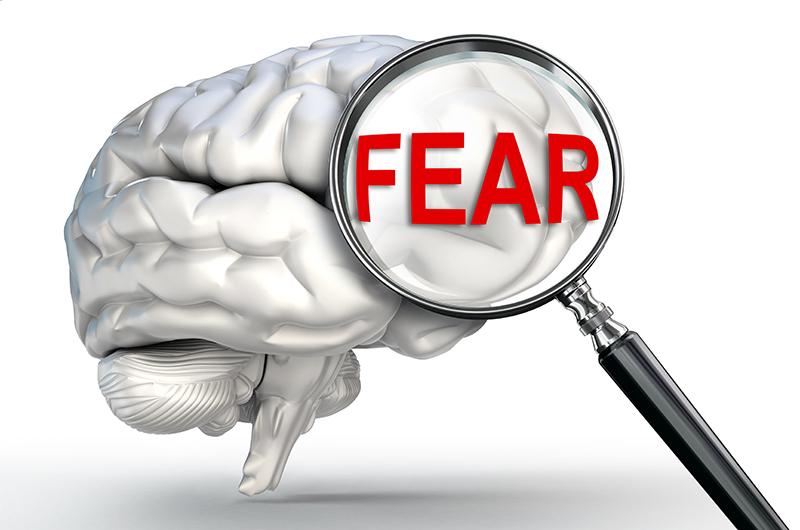Let’s take a closer look at what happens.
Fight or flight
When faced with stress/danger your brain sends a signal to adrenal glands which release hormones including adrenalin and cortisol. This triggers the sympatheticnervous system to send blood and oxygen to your big muscles to enable them to run or fight. Your heart beats harder/faster as it distributes more oxygen and blood to your body. Some other things that happen are:
- Pupils dilate to let more light in so you can see better
- Blood moves from your hands and feet to major muscles like thighs – you may experience cold, tingling, or numbness
- As your body tries to get more oxygen this can cause you to hyperventilate which makes you feel light-headed
- Your digestive system slows down as your body puts energy into other things – this can make you feel nauseous
- Movement of blood to head and muscles can cause you go red
- Muscles tremble as they are primed for action – which is why you shake.
When it comes to public speaking we can experience these symptoms in the lead-up to speaking and while we are speaking.
Freeze
The freeze response is a little different. This is what happens to the body when we can’t fight or flee. The evolutionary basis is that if we are under attack and we play dead we either won’t be noticed or we will be let go. When we freeze the body’s defence mechanism are setting in. You may experience a numbing out or disassociation or feeling of being stuck in some part of the body. You may also feel cold.
The physiological basis is a bit more complex but it goes something like this. When cortisol floods your system and sympathetic nervous system can’t cope, this triggers your parasympathetic system. The parasympathetic system is normally responsible for relaxation and sleep but when it goes into overdrive it is like the body shutting down.
This is a typical reaction while people are speaking, rather than in the lead-up. The most common symptom is forgetting what you want to say or “going blank”. Some people also talk about that feeling of disassociation – their words feel disconnected from them.
The role of the amygdala
The amygdala is the part of the brain that senses danger first. It is a small almond shaped collection of nuclei which receive fearful stimuli before our brain has a chance to process whether the danger is real. The amygdala is also thought to have a role in forming memories that are associated with fearful events which can cause the anxiety or dread that happens when you think about a potential threat such as an upcoming speech.
What you can you do about it
Many of my other blog articles are about how to manage your nerves (or your panic). For example, read about how to calm yourself by connecting with the audience. Most people will need to employ several strategies and a lot of patience but your persistence will pay off. Because this article is about how the body responds to danger, I am going to focus on physiological strategies here. If you combine these strategies with mental strategies (training yourself to think differently), and lots of preparation and practice (especially in a safe environment where it is OK to make mistakes) you will find that your symptoms will become less extreme.
- Deep breathing, humming, laughing and even gargling can stimulate the vagus nerve, which is the longest cranial nerve in the body, extending from the brain, through the face, and thorax to the abdomen. In other words, it connects the brain to the gut. The vagus nerve is the primary component of the parasympathetic nervous system. If you are experiencing fight/flight type symptoms before you speak, then doing any of the above will help relax you a little.
- There is a famous TED talk by Amy Cuddy who suggests another way of faking confidence is through using ‘power poses’. You can watch the full TED talk for all the details but the advice is this – practice two minutes or more of ‘power poses’ before you speak. This means open and spread out body language – e.g. extending your arms and legs or pumping your fist. You can be sitting or standing. The opposite of a power pose is to make yourself smaller – crossing arms and legs, hunching over, or holding your neck. Apparently, by holding a power pose, your testosterone will rise and your cortisol (stress hormone) should fall. These changes should make you feel more powerful.
- Moving around the stage. You are more likely to freeze if you stand rooted to the same spot. Try to move around a little – in a deliberate way. For example, you can move to address one side of the room and then the other. Or walk towards the audience to draw them in. Using hand gestures is also helpful. Moving provides an outlet to the adrenalin pumping through your body.
Finally, for a great animated explanation of what happens to you during stage fright, watch this short Ted Ed lesson.

